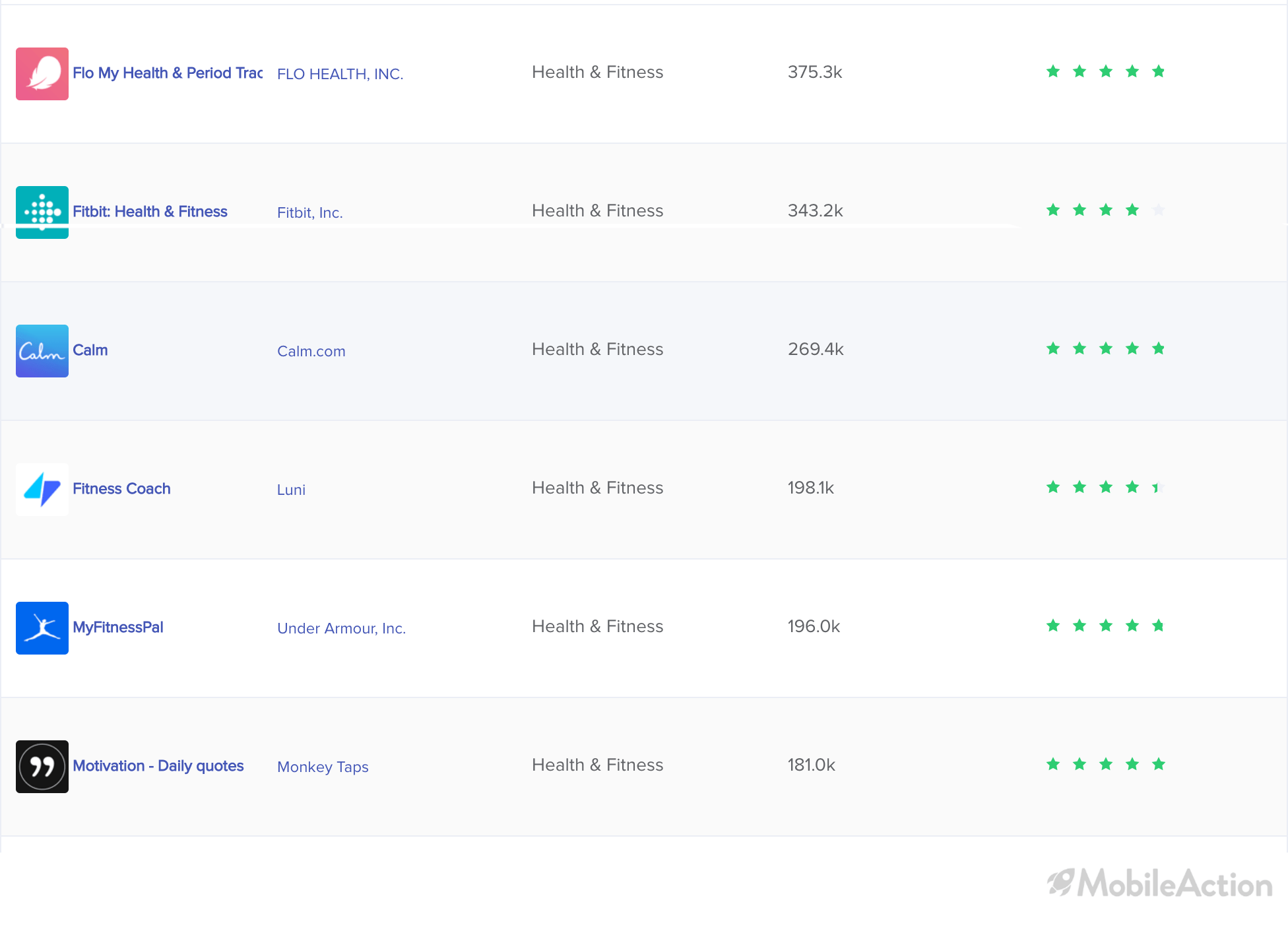Win the ASO game with these ASO tips and UA Strategies
So you have developed and launched your app. Now what? Time to get people to download it! And what better way to get your app out there than with App Store Optimization (ASO).
App Store optimization is how you, the app developer, can increase your app’s visibility in the app store. More than 65% of app downloads come from organic searches in the App Store. So if you want people to find your app and download it, a carefully planned ASO strategy will certainly boost your app’s overall success.
As an app developer, you know very well that the market is intense and you need to do something to stand out and get an edge over your competitors. Read on to improve your user acquisition strategy for apps.
Here we have a list of winning ASO practices, insights, and techniques to get your app out there to your target market.
Research smart
Google Play and iOS have different character limits for their descriptions and titles which is where you will be doing some of your most important keyword targeting. Try to make the most of the specific character limits of each asset.
Don’t forget that character limits include spaces and commas!
MobileAction’s ASO Intelligence tool
ASO tools such as the one we provide at MobileAction, are more than helpful when brainstorming for keywords. MobileAction has several app store optimization tools that can help you along your ASO journey. To get started you can check out what your competitors are using as keywords, which ones they are getting the most downloads from, what keywords are being used in their reviews, keyword scores, keyword trends, suggested keywords, and much more.
Check the keyword scores to make sure each keyword is worth using in your metadata and you can localize them with our translation feature. You can also see where your competitors have localized their keywords to try to find some markets that they might be missing out on. You can also get a head start on your localization using their keywords as a reference. We also have a translator toggle to help you when researching new keywords. This simplifies optimization tailored to different locations.
Keyword Research
Keyword research is incredibly important for optimization. MobileAction has an ASO Tool that can be used to assist in this. You can quickly find new keywords for a seed keyword you have with this tool. It is as easy as entering in a keyword. You will be suggested similar keywords, long-tail versions, Apple auto-fill as well as Google Play suggestions. This will let you see all of the newest trends in keyword searches and help get your creative juices flowing. You can also add the keywords from this tab into your tracking list to keep a check on them in a single dashboard.
Keyword Explorer ASO Tool
Here you can find out which apps are displayed by search term. It will show you the different stores as well as all the KPIs related to the success of an app. You can easily compare these metrics such as the download numbers, revenues, and average ratings. It is also easy to find similar keywords with a similarity score from this tab. This way you can choose the keywords with the best scores for your optimization.
ASO Report Tool
Within the Keyword Intelligence Tool, MobileAction also has an ASO report tab that can monitor the health of your keywords. You can quickly check your app or any other from this tab. It will show you how many keywords your app ranks for, any changes that have happened in your ranking throughout the week as well as a historical ranking by keyword. This feature is updated daily and can be extremely useful in maintaining good ASO health in your app.
Typos are your friend
It’s true! When it comes to optimization, Typing and Spelling errors are your friend. Well, your customers’ typos are your friend anyway. If you include a few variations of some common typos, this can help you get traction on some popular search terms that might not have as high of traffic but are sure to be used by people with similar intentions. Spelling mistakes are also great for this. These are good to target within the iOS keyword lists as it is not visible to users but is scanned by the algorithm. This is also where you can target competitor keywords.
Optimize Metadata to gain organic search results
Optimizing the keywords in your metadata is crucial for ASO. App Store search results are based on the keywords in your title, subtitle, and keywords so they are an important place to optimize. This is how you will get your organic downloads in the app store and where you should try to increase as much traffic as you can.
App Name
Your app’s name is one of the first things people will know about it. It is also the strongest ranking factor. There are two different well-known approaches to naming your app: Branding approach and ASO approach.You can find the details about this in our ASO guide. As the names suggest, you can either create a catchy name that people will remember and market that, or you can name your app based on its function (with a high ranking keyword) and hope that people will search for it. This along with its icon. It is important to choose either a short, concise, and memorable name, or a completely relevant keyword packed name. When planning your user acquisition strategy considers this. The first strategy is more popular in the iOS store due to the lower character limit. For the Apple App Store, choose a name that is easy to spell and hints at the use of your app. You can check your app name in our ASO tool as well as any app names of competitors to see which ones are getting the most attention and what ASO strategies people are using in their titles.

As seen above, these Health and Fitness apps are using a combination of both strategies. Flo for example, is a recognizable brand name that hints at its funcion. However, the app has also utilized their remaining characters in the title to aid in getting placed in the results for those who search the term “Period tracker” or “health and period tracker” and so on.
Relevancy Matters in Optimization
Shoot for a balance between medium-high volume and relevancy when choosing the keywords you would like to employ in your store metadata. Even if you manage to get to the top of the search results for a high ranking term if it doesn’t reflect what your app is, people are unlikely to install it. If they do they will quickly delete it.
Know your Target Audience and your competition
You can run variations of the same campaign focussing on a different aspect of your application. See which ones are doing best and optimize accordingly. Maybe they are both getting good results but from different audiences?
Your audience
Your ASO strategy depends on you having a good understanding of your audience. App marketing requires you to understand your audience. You should know who they are and what they want. You should also know who else is offering them that service in the app market.
According to the statistics, the description is one of the lesser viewed assets in the store listing. However, it should be written in a way that appeals to those who do read it. Use bullet points and headings to get across a clear message of exactly what it is that your app does, in a way that will be identifiable for your potential users. You should be able to easily see your app’s USPs and any special offers should be understandable at a glance.
Think about what language your customers normally use. What expressions and typos would they search for surrounding your product. You know how you would describe your app, but how would they? You should also understand what their reasons for downloading your app specifically are. Have they heard of your brand name before? Do you have particularly good ratings? Do you offer something unique and different from other similar apps?
Localization optimization
It is important to adjust your keywords for the country and language that you are optimizing. Your mobile app marketing strategy will differ from location to location. This of course means you should translate keywords into other languages when applicable. Additionally, consider the fact that language is not used the same way in different cultural contexts. English, for example, is spoken differently in different countries. If you are in the US, you will not speak the same as someone in the UK. If you are in Canada you will use different expressions than someone in Australia and so on. Keywords, as well as longer search terms, will therefore vary from country to country even if they speak the same language.
Your competition as an optimization strategy
Your competitors may already be doing some ASO but they aren’t necessarily doing it better than you. The key may very well be to just run all the same keywords as your competitors. However, you should examine your competitors’ ASO strategy carefully and critically. What keywords do my competitors target? Why are they targeting these? What are their scores? Are they targeting a popular keyword or a niche keyword?
Once you have defined their strategy, you can take elements from it that you like and try to improve on their shortcomings. You can also try to fit in the gaps of their target market and get users there.
For example, when you look at the rankings of Duolingo compared to Google Classroom, they are inversely related. Duolingo fills in the learning app community when people are not in school (on weekends and holidays).
The other thing is that they are not direct competitors. The same users can use both apps. Think about what kind of app you have. If you have a shopping or gaming app your users may want more than one. Or is it something like a calculator or period tracker app where one is enough?
However, exercise caution when targeting competitor brand keywords as your app risks getting rejected from the store. Target your competitor keywords only in the hidden iOS keyword list, or target competitor app names that are also relevant keywords.
iOS VS Android optimization
Android and iOS look for different things in terms of metadata. Android will match your search with the exact phrase you are targeting, while iOS mixes and matches keyword combinations for you.
This will affect your strategy. For iOS you should be targeting as many relevant keywords as possible, there is no need to repeat the same word twice as they will be scrambled by the apple app store anyway.
In android, you should try to fit in as many possible search phrases and word groups as possible and to make sure that you show up in your users’ search results.
You should also not waste character space in iOS.
Space in the iOS store is extremely limited, and some such words are already included by Apple such as “app”, “online”, or “free”. There is also no need to put the category name of your app in your description or app name. You needn’t name your blackjack app “Blackjack Card Game” for example.
iOS also allows you to put your app under two categories simultaneously as long as they are relevant. Make use of this! But don’t change categories if you are already doing well in your existing category.
Use Apple Search Ads
Organic search results are great. However, a high traffic platform such as the Apple App Store can be further utilized as a marketing platform. With Apple Search Ads, your ads will appear at the top of the search results based on a keyword auction. You can bid on keywords to have your app appear to users above their search results. This can give you an edge above your competitors and is cost-efficient compared to other advertising platforms. Use the same strategies when choosing keywords to bid on as you do in your metadata keyword selection and run various campaigns to target specific sections of your intended user base.
To learn more about Apple Search Ads best practices, check out our blog post, and get started.
Never Stop Optimizing
Continue the optimization process. Optimization is not something you do once and are done with. Every couple of weeks you should be updating your keywords to make sure you are getting the best possible app growth.
An important part of ASO is to recognize that keyword tracking is an ongoing process. You will have to continue tracking and monitoring the success or failure of your keywords. To understand which is which, you should be looking at two main metrics. The first is the volume which is an estimation of the popularity of a search term. The second is the ranking position of your application according to the keyword.
Optimize your graphics too
Make sure that your graphics contain a short and clear call to action. This is an important step for mobile app growth. Continue to test your screenshot orientation. Test different variations of each of your graphics. Make sure to change one element at a time so that it remains clear to you which elements are positively and negatively impacting your conversion rates. You can include video in the iOS App Store. Up to 3 videos can be uploaded which will appear directly in the search results of people looking for your app. This can make or break your app for a potential user.
You can always log in to MobileAction to perform a creative analysis of your app or any of your competitors. You can see the screenshots they are using in each store as well as their creatives. Active and total creatives are shown and percentages are given for which publishers each app is using. Combined with our ASO tool, this will help you plan out your creative strategy.
Optimizing for the holidays also never hurts. Check out our article on seasonal marketing to hear more about that.
Most visitors to the app store will not scroll through every screenshot you have. It is important to showcase what you have to offer as efficiently as possible. The unique selling points should be front and center.
On your marks, get set, optimization!
Now it’s time to get started with your optimization. You have all the tools you need to do your App Store optimization and your user acquisition strategies are in place. You have, surely, signed up for a demo with MobileAction to make use of our keyword Intelligence tool and you are ready to get those downloads!
Good luck, sign up for a demo and see you on the top charts soon!




